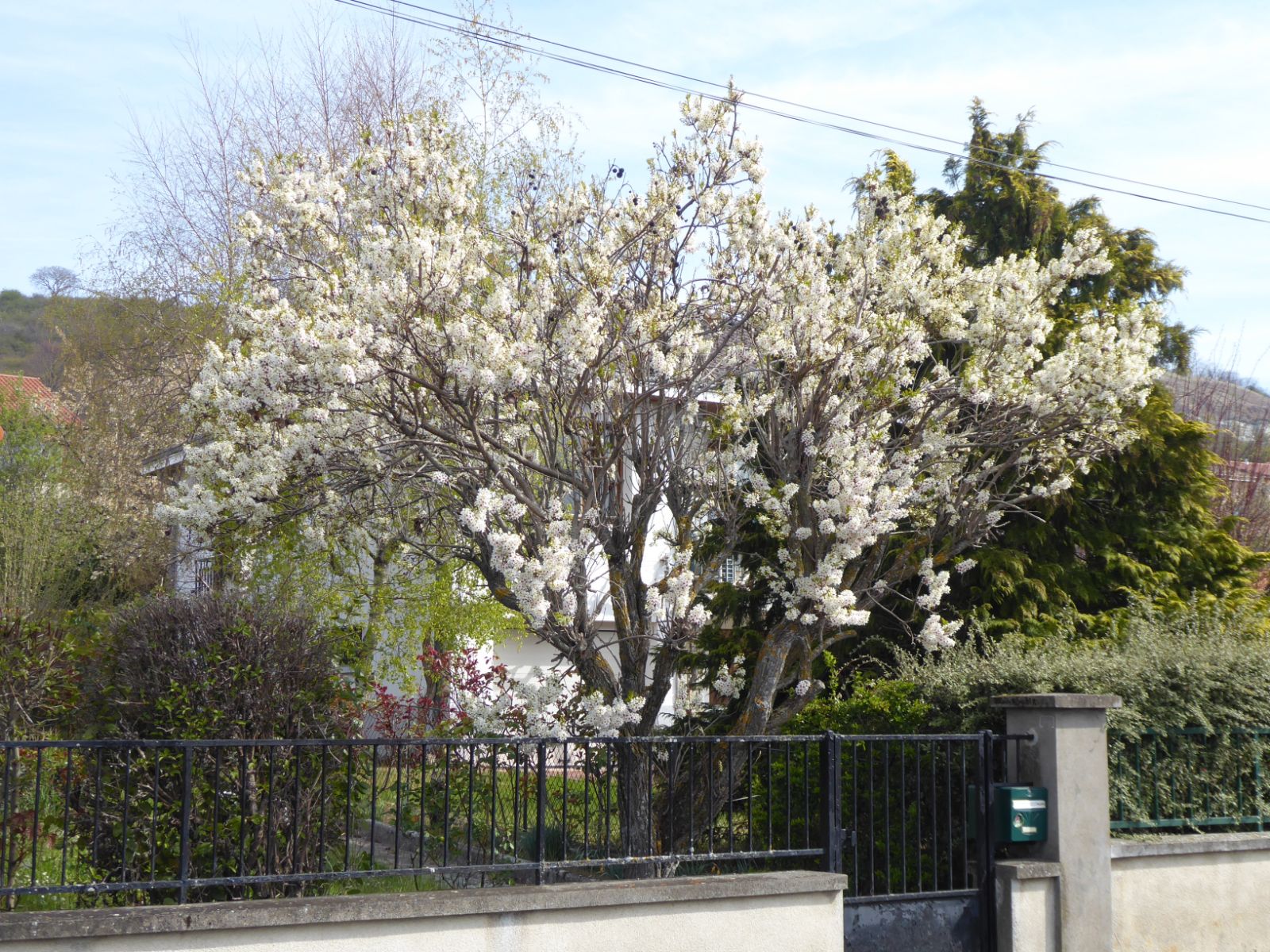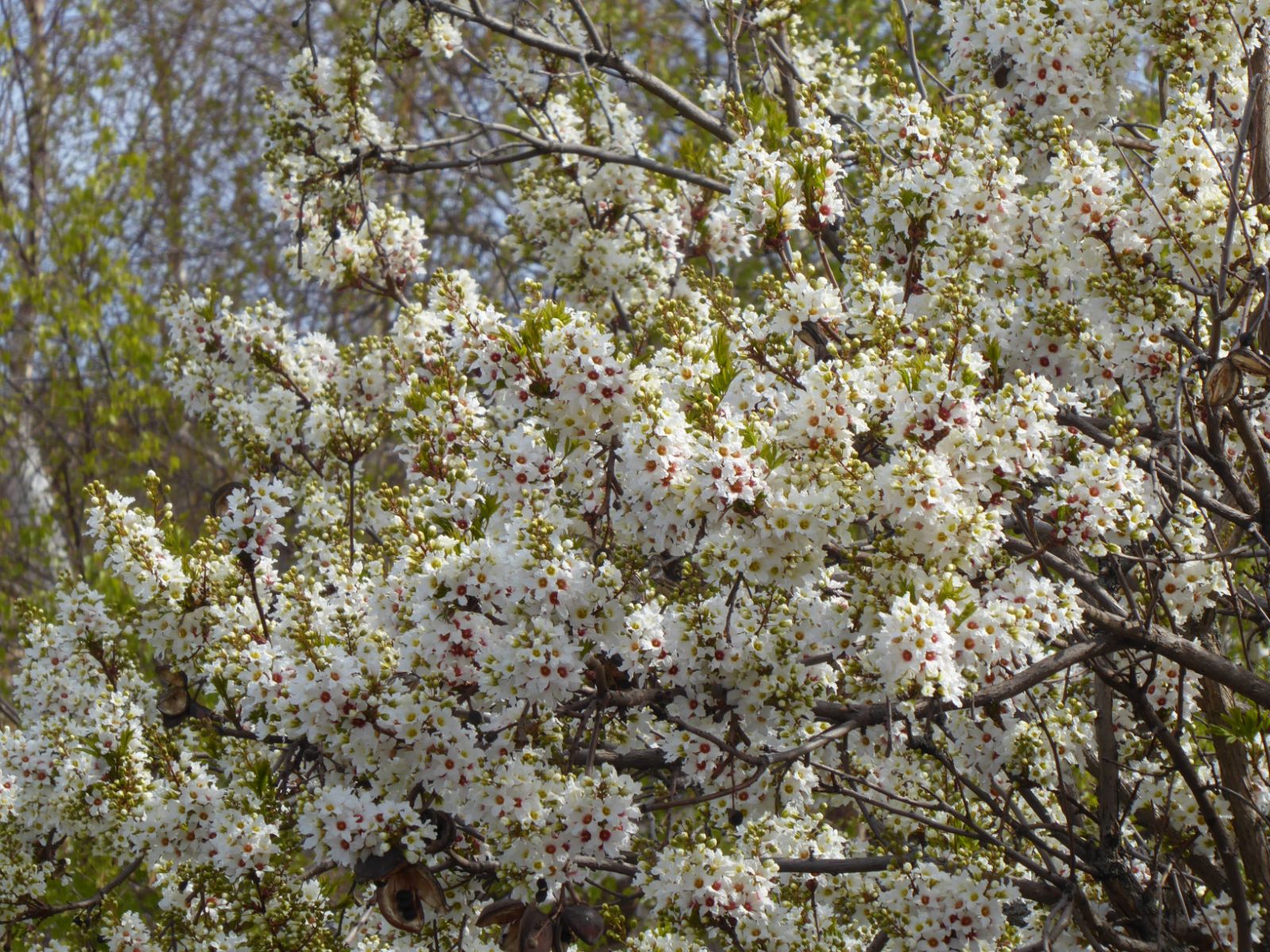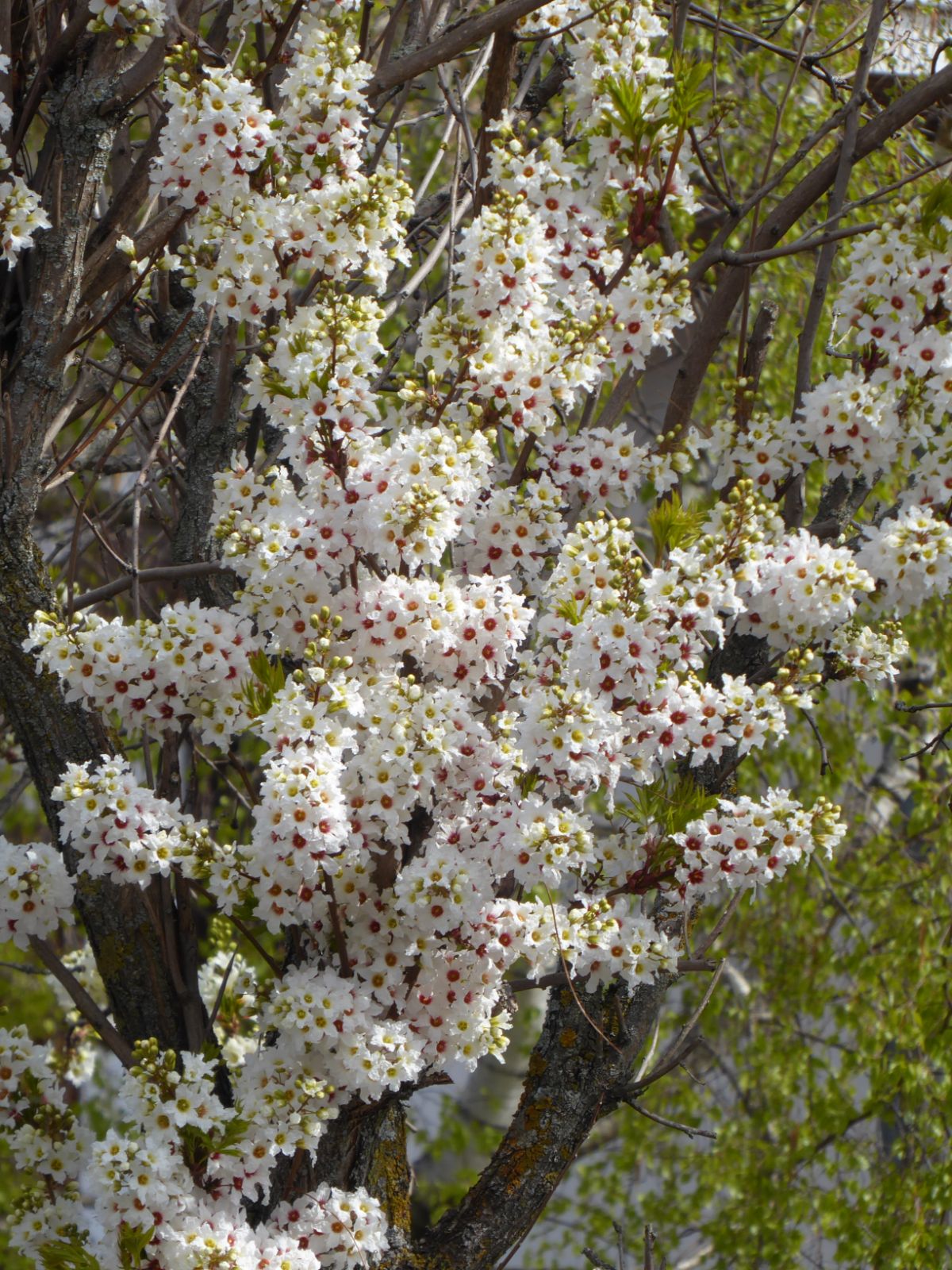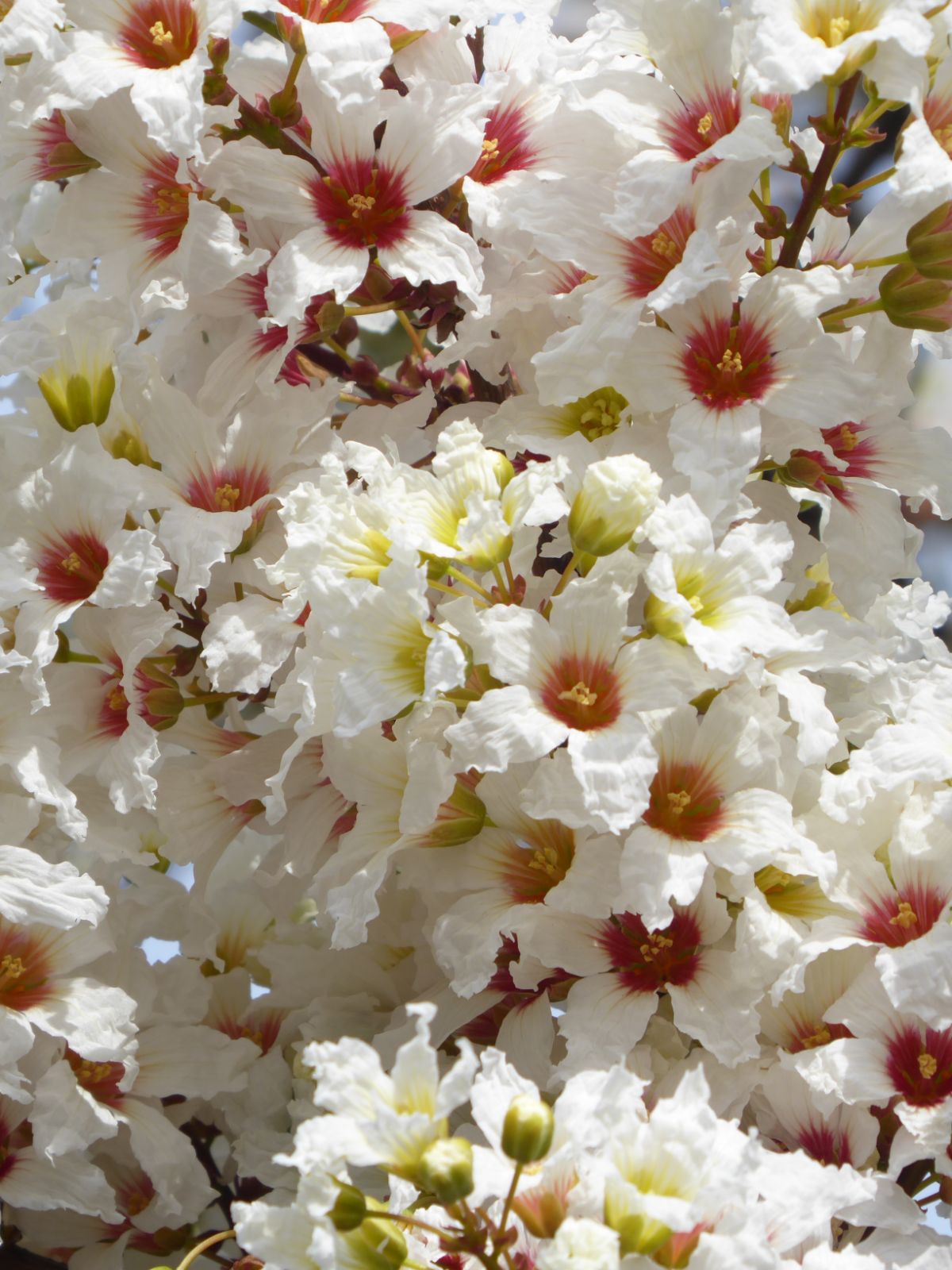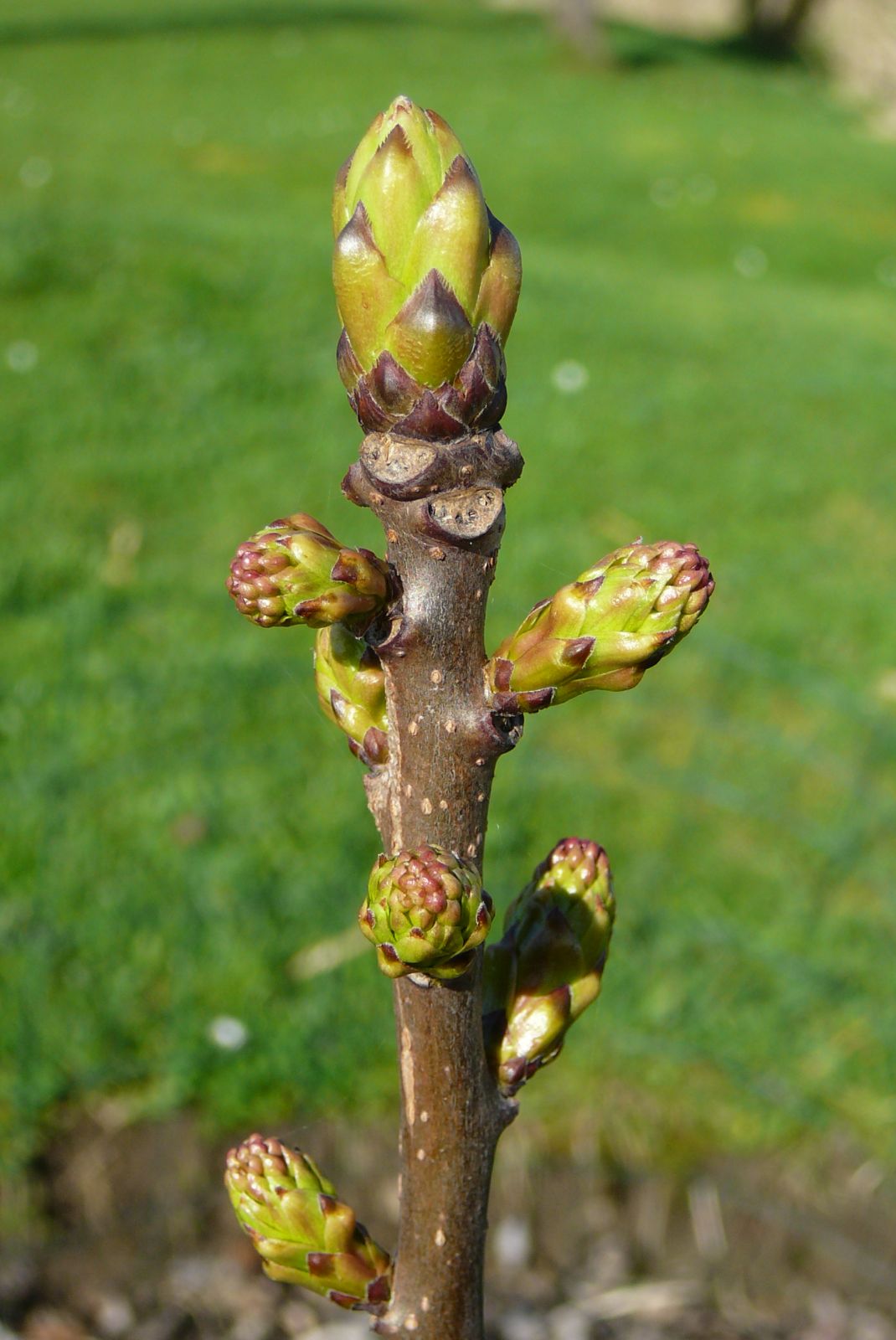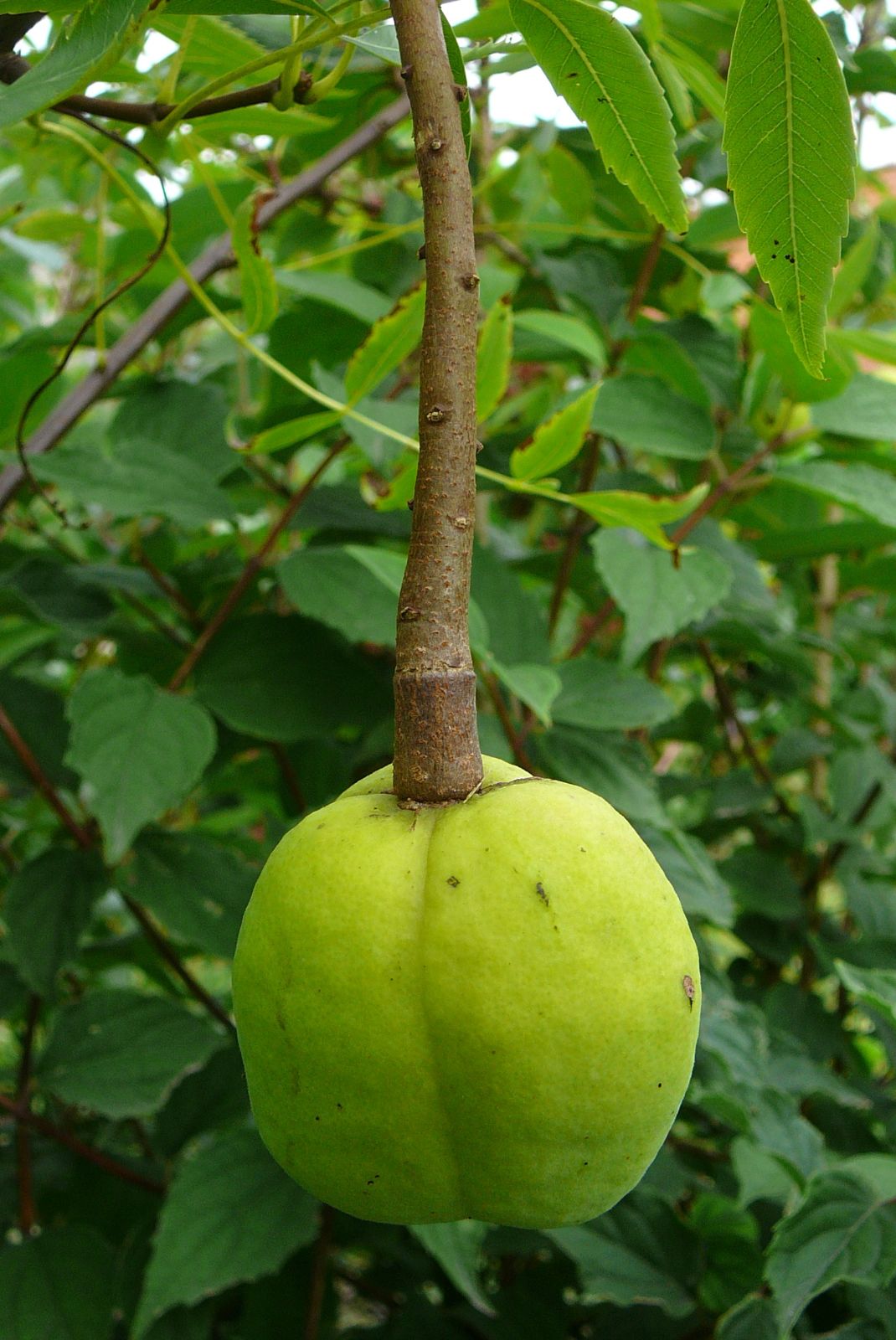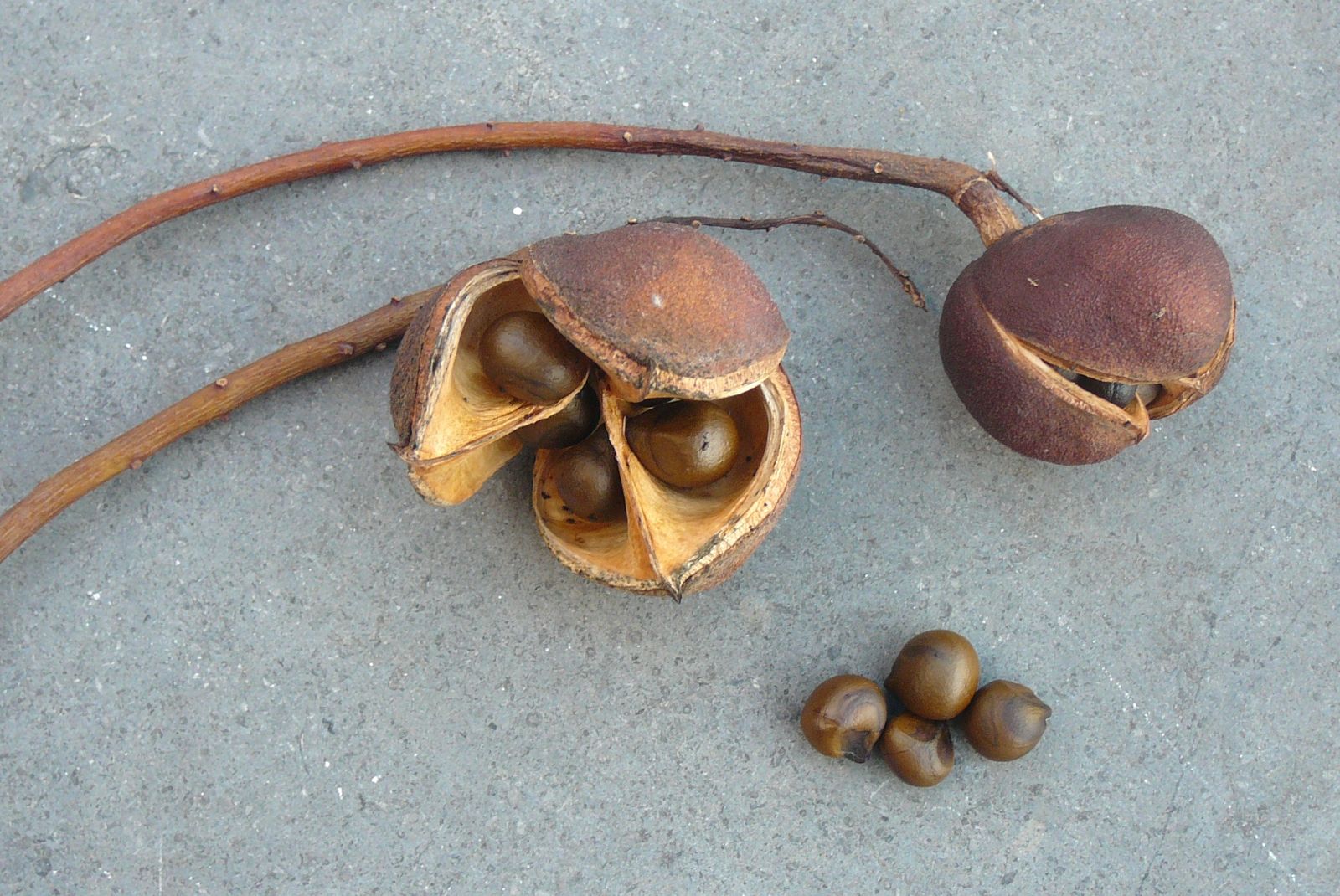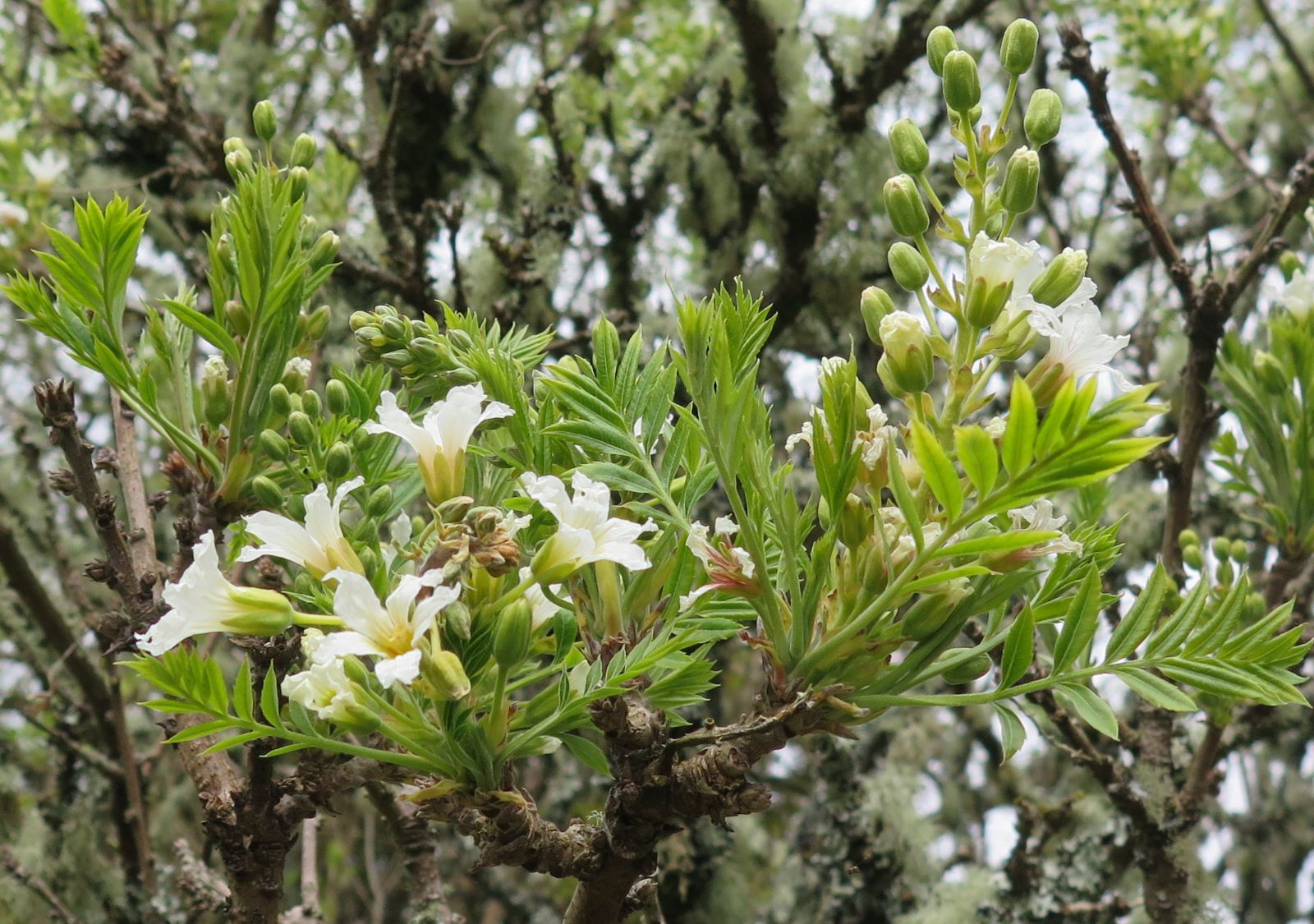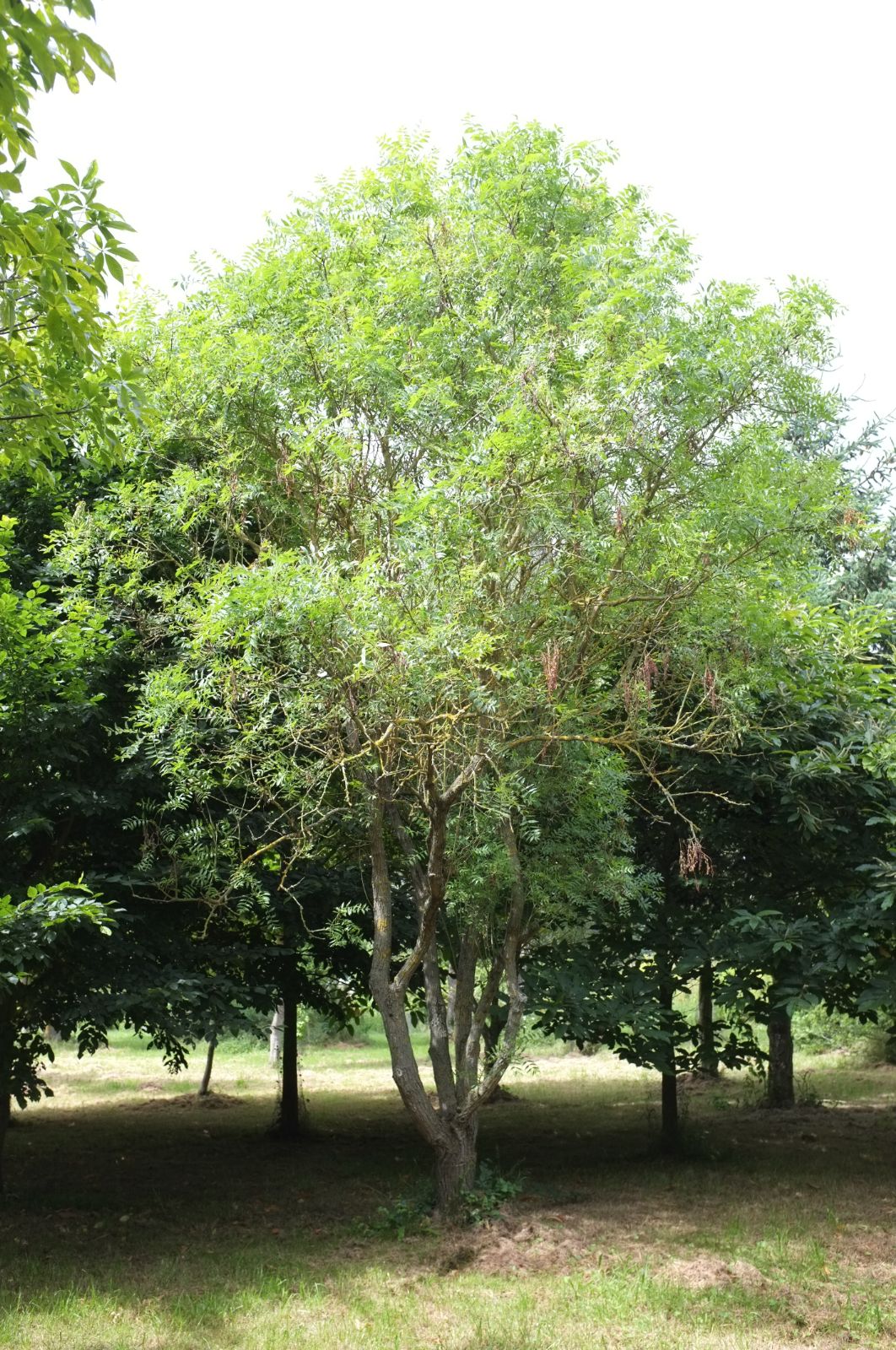Xanthoceras sorbifolium
Credits
Article from Bean's Trees and Shrubs Hardy in the British Isles
Recommended citation
'Xanthoceras sorbifolium' from the website Trees and Shrubs Online (treesandshrubsonline.
Genus
Other taxa in genus
A deciduous shrub or small tree up to 20 ft high, of rather stiff, erect habit, with a large quantity of pith in the young branches. Leaves pinnate, alternate, 5 to 8 in. long, glabrous; leaflets nine to seventeen, borne on the upper two-thirds of the main-stalk, 11⁄2 to 21⁄2 in. long, lanceolate, deeply and sharply toothed. Flowers produced during May in erect panicles at the end of the shoots of the previous year, and from the side buds; the terminal panicle is considerably the largest, and up to 8 in. long; the side ones about half as large. Each flower is 1 to 11⁄4 in. across, the five white petals having a carmine stain at the base. Fruit a top-shaped capsule 2 in. wide at the top, tapering to a stout stalk at the base; it is three-valved, and as the valves open they release the rather numerous seeds, which resemble chestnuts, but are only 1⁄3 to 1⁄2 in. wide. Bot. Mag., t. 6923.
Native of N. China; introduced by Père David, who sent a seedling to the Paris Museum in 1866, which was successfully established and had fruited by 1873. Although hardy, it is a heat-loving species which is really most at home in southeastern England, East Anglia and the E. Midlands. Where the summers are cooler than average it needs the additional heat provided by a wall to ripen its wood and to set flower-bud. Grown in the open it needs a position not subject to late frost, as the flowers come out with the young leaves. Still, it is one of the most beautiful of small trees when seen at its best. An interesting feature of the flower is the change of colour of the flare as the flower ages – at first yellow, later pink. There is a fine specimen of this species at the Garden House, Saltwood, Kent.
X. sorbifolium is best propagated by seeds, but, failing these, cuttings of roots may be used, placing them in gentle heat in April. Like other pithy stemmed shrubs and trees, the plant is rather subject to the attacks of the coral-spot fungus. Branches attacked should be cut off as soon as noticed, and burnt, the wounds being coated over with a proprietary dressing.

